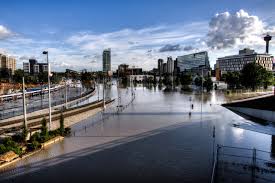Calgary Flooding: Understanding Its Impact and Recovery Efforts

Introduction
The issue of flooding in Calgary has become increasingly relevant in recent years, as changing climate patterns contribute to severe weather events. The flood that hit Calgary in 2023 serves as a stark reminder of the vulnerabilities faced by urban environments. Understanding the implications of this flooding and the community’s response is crucial for residents, planners, and stakeholders in disaster management.
The 2023 Calgary Flood
In late July 2023, Calgary experienced one of its most significant flooding events in recent history, characterized by unusually heavy rainfall that overwhelmed the Elbow River and Bow River systems. The downpour, which yielded more than 100mm of rain in some areas, led to rapid water level rises that flooded homes, businesses, and parks. Streets were transformed into rivers, and emergency services were stretched thin as they worked to respond to the unfolding crisis.
Impact of the Flooding
The immediate impact of the flooding was catastrophic. Several neighborhoods, including Bridgeland and Inglewood, reported extensive damage to properties and infrastructure. Emergency services were deployed, and around 1,000 residents were forced to evacuate their homes as authorities prioritized health and safety. The Calgary Emergency Management Agency (CEMA) implemented the city’s response plan, ensuring that evacuation centers were established and adequate resources were available for those displaced.
In addition to the physical destruction, the flooding brought to light the importance of community support and resilience. Local organizations mobilized quickly, offering assistance packages and shelter to those affected. Volunteers played a crucial role in cleanup efforts, demonstrating the community’s spirit and determination to rebuild.
Recovery and Future Preparedness
As recovery efforts continue, the Calgary city government has committed to a comprehensive assessment of the damage and the implementation of long-term flood mitigation strategies. Plans include enhancing drainage systems, improving river banks, and investing in green infrastructure to absorb excess rainwater. Officials emphasize that addressing the root causes of flooding is essential to minimize future occurrences.
Conclusion
The 2023 Calgary flooding serves as a pivotal moment for the city, presenting both challenges and opportunities for growth and improvement. As the city moves forward, the focus on disaster preparedness and community resilience will be critical in safeguarding against future flooding events. For Calgary residents, staying informed and engaged in local planning processes will be essential in fostering a more resilient future.









